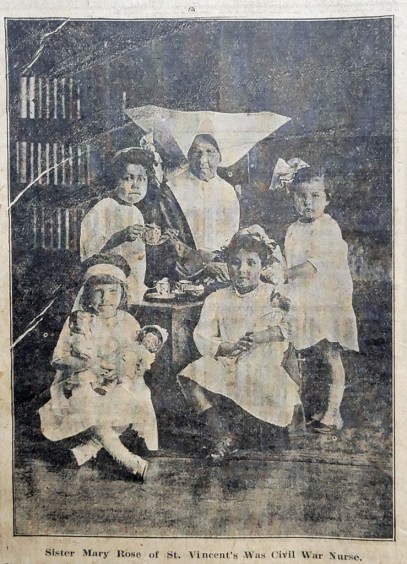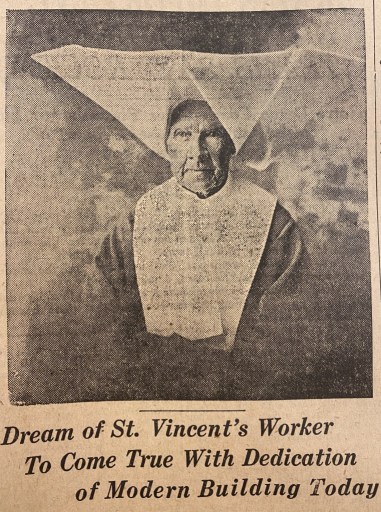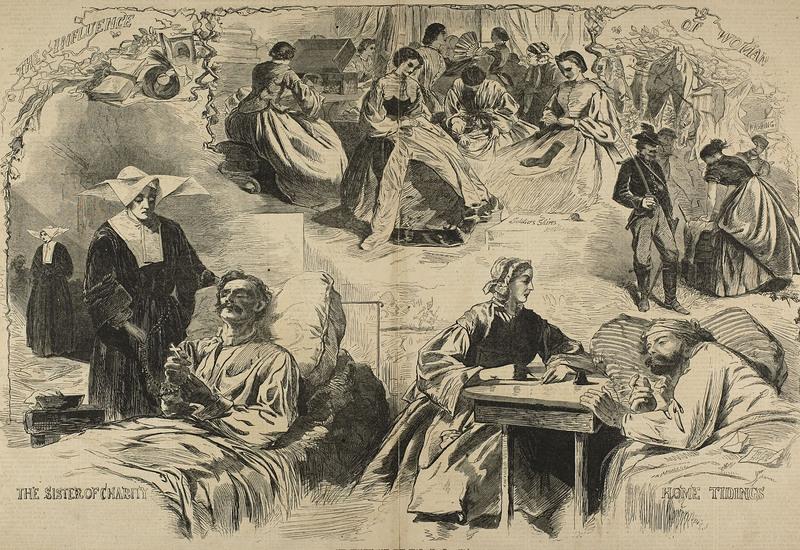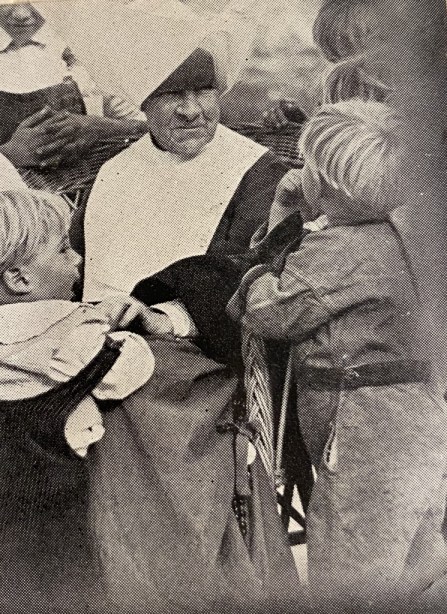The Echoes of the Civil War in Santa Barbara
The Legacy of Sister Mary Rose Brady

The connections between Santa Barbara and the history of the Civil War aren’t well-known. Although the state of California played a major role in ensuring the Union’s decisive victory, the city was far removed from the brunt of the war’s violence. Still, the people of Santa Barbara made several notable contributions to the war effort. Among them was the formation of volunteer Santa Barbara Company C of the First Battalion of the Native California Cavalry under the leadership of Antonio María de la Guerra in 1864. Less prominent in the lore of the conflict was the dangerous and selfless work of the Civil War nurses, and among these nurses was a Daughter of Charity and Santa Barbara resident of 39 years: Sister Mary Rose Brady.
Nursing was a fledgling and male-dominated profession at the outbreak of the Civil War. When the war’s staggering casualties overwhelmed hospitals, Catholic nuns were the only people in the country who had the skills to provide critical care to gravely wounded soldiers. The nuns’ mission to care for the poor, marginalized, and sick equipped them with the practical knowledge in providing medical care for wounded soldiers. During the war, more than 600 Catholic nuns from 21 religious orders worked as nurses in Confederate and Union hospitals. Serving as a neutral nursing corps, they traversed battlefields and toiled in prison camps and military hospitals across 15 states and the District of Columbia. They endured the dangers of warfare, contended with a deep-seated anti-Catholic prejudice, and braved exposure to disease to provide lifesaving assistance and compassionate care for mortally wounded soldiers.

Sister Mary Rose was born in the Deep South in May 1837 in Mobile, Alabama. The rare extant accounts of her life described her as a “gentlewoman,” a scion of “a fine old Southern family.” As a teenager, Mary Rose chose to forsake the life of privilege and following in the footsteps of her older sister, she joined the Daughters of Charity of St. Vincent de Paul in 1856 at the age of 19. Before the start of the Civil War, Sister Mary Rose honed her nursing skills while working at the House of the Five Wounds orphanage in New Orleans and the City Hospital in Mobile. When the war erupted in 1861, she was working at St. Mary’s Asylum in Natchez, Mississippi.
The Civil War caught Sister Mary Rose in a whirlwind of violence that left painful memories, which she was reluctant to recall. When journalists did pry into her experiences during the war, the Sister routinely offered a humble and laconic response: “It is a thing of the past now.” Nevertheless, the scattered newspaper reports and testimonies of her contemporaries give a vivid glimpse into the war years. She survived the shelling of Natchez by the Union gunboats in 1862. Although the city was spared from devastation, sporadic violence continued to be a frequent guest. The Confederate soldiers continued to raid the city’s outskirts targeting the Union’s outposts. All the while, thousands of refugees, including formerly enslaved people, arrived in the city and the surrounding countryside. Hunger and disease were rampant and caused great suffering. In the midst of the turmoil, Sister Mary Rose continued taking care of the orphans at St. Mary’s Asylum and, as one newspaper put it, “succored the fallen soldiers of the North and the South with shells bursting about.” The 1918 article in Santa Barbara’s Morning Press described her as “a veteran nurse of the Civil War who followed the Union armies through the thickest battles.” As a firsthand witness to the institution of slavery in the American South, the Sister supported abolition and welcomed Lincoln’s Emancipation Proclamation in 1863. In 1865, the Civil War cannons went silent, announcing the defeat of the secessionist cause and triumph of the Union. By this time, she returned to her vocation by working in an orphanage in New Orleans. Her nursing skills became once again indispensable when a yellow fever epidemic gripped the city in 1878. Tending to the sick and dying at the local hospital, she miraculously survived the epidemic.

Sister Mary Rose arrived in Santa Barbara in 1888, where she joined other Daughters of Charity who had arrived in 1858 and opened the city’s first English-language school and orphanage. Most of her days were preoccupied with caring for orphans. By all accounts, she accepted this great responsibility with joy and devotion. She often walked for several miles carrying a large basket filled with bread and vegetables that she distributed to Santa Barbara’s poor or sick residents. Her nursing skills were always in high demand, and she frequently visited the houses where suffering people needed essential medical care or the comfort of spiritual companionship.

More than 39 years of dedicated service to the Santa Barbara community earned her praise from local newspapers that described her as “one of Santa Barbara’s most beloved citizens.” Her renown was not confined to the city boundaries, however. In the twilight of her life, the state of California recognized Sister Mary Rose as one of “the oldest and foremost social workers in the state.” In recognition of this accomplishment, the Sister’s picture was displayed publicly in the Department of Public Welfare in Sacramento. By the early 1920s, Sister Mary Rose’s birthday celebrations became a city-wide affair enjoyed by ordinary townsfolk and the movers and shakers of Montecito, as well as the members of the Grand Army of the Republic — a fraternal organization of veterans of the Union Army who endearingly called her their “comrade Sister.”
Sister Mary Rose passed away in 1927 at 89 years old. In a heartfelt tribute to her life of service, obituaries hailed her as “one of the most beloved residents of the city where her name has become a byword for devotion and service, and she will be an inspiration for all social achievements here in the future.” Indeed, this remarkable legacy continues to grow in Santa Barbara to this day. Daughters of Charity at St. Vincent’s provides affordable housing for low-income families and seniors, transitional housing for mothers with young children, affordable daycare, and a day center for people experiencing homelessness, the Fr. Virgil Cordano Center.
Sergey Salushchev has a PhD in history from UC Santa Barbara and is currently a researcher and archivist at St. Vincent’s. This article is based on his research in the archives in St. Vincent’s in Santa Barbara, the Santa Barbara Historical Museum, and the Daughters of Charity Province of St. Louise Archives in Emmitsburg, Maryland.




You must be logged in to post a comment.